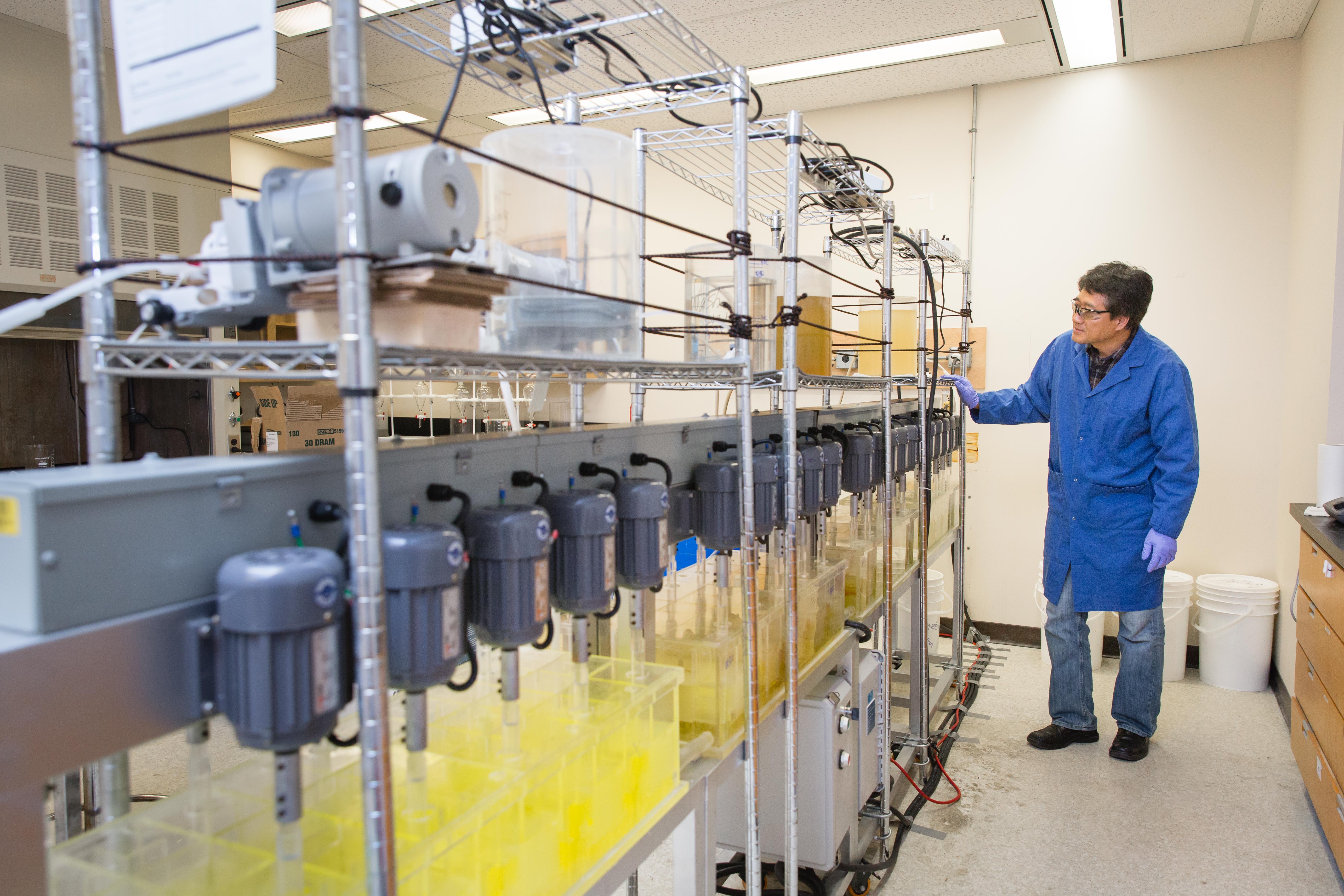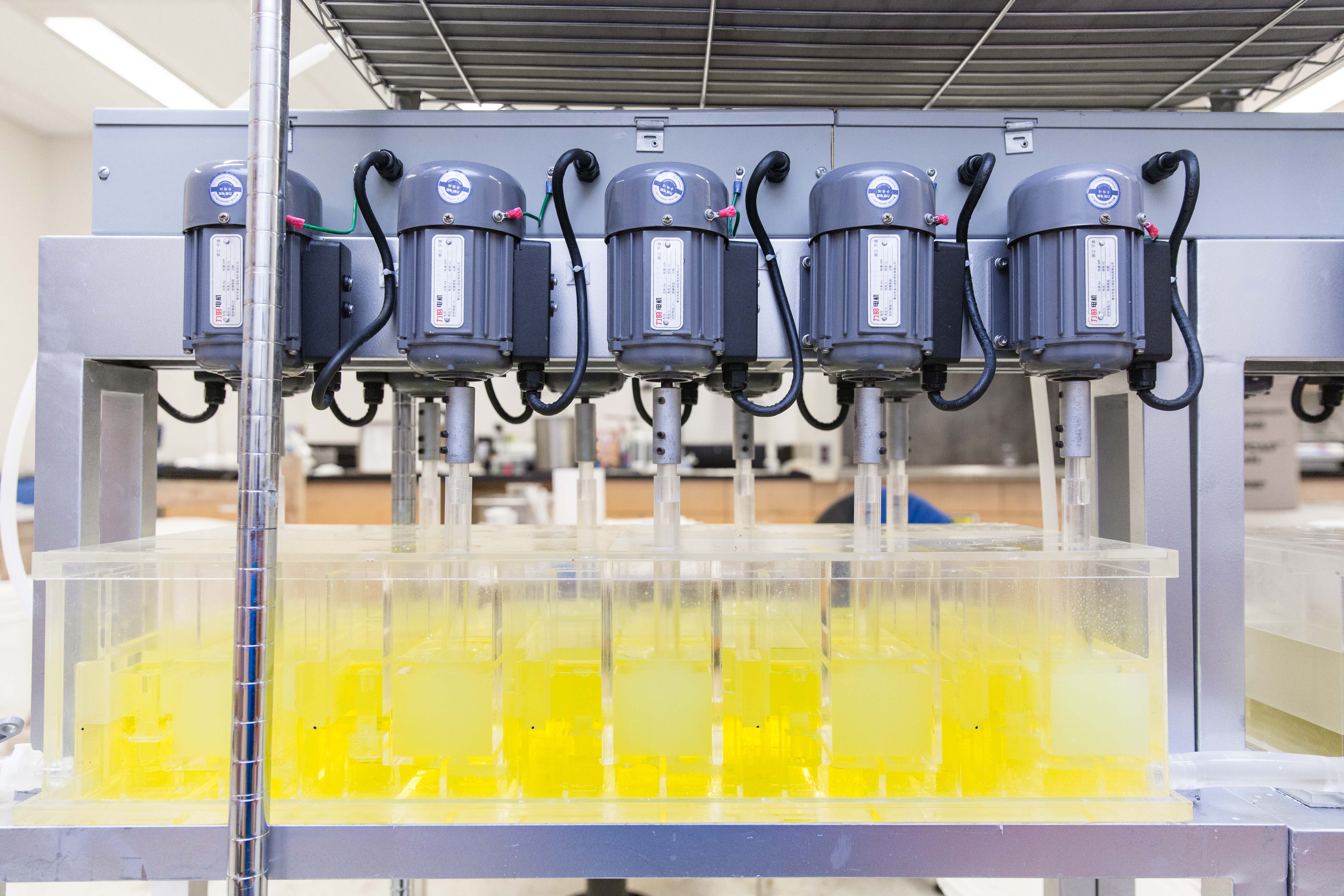Most of us know that Saskatchewan is the world’s richest and largest uranium jurisdiction. But did you know that Rare Earth Elements (REEs) are often found within uranium deposits, making Saskatchewan rich in other elements few of us have even heard of? While these REEs carry significant financial potential, these valuable minerals often end up in tailings ponds because extraction is often not economically feasible, meaning a significant loss in potential value to mining companies and the Saskatchewan economy.

So, what are Rare Earth Elements?
Despite their name, REEs are neither rare nor earths. Some are more abundant than copper, lead, gold and platinum. However, they typically occur in relatively low concentrations so their recovery is not economical.
Although often required in small quantities, REEs have a wide range of applications, including use in hybrid and electric cars, fluorescent lights, plasma screens, portable computers, hand-held electronic devices, wind power generators, permanent magnets, batteries and medical devices. REEs can also have important defense applications, such as jet fighter engines, missile guidance systems, anti-missile defense systems, space-based satellites and communication systems.
Because of this, demand and value for REEs has increased significantly over the past number of years, especially for the heavy kinds. This bodes well for Saskatchewan, as uranium deposits typically have a higher ratio of heavy REEs than most other types of mineral deposits. In fact, around 80 per cent of the REEs in Saskatchewan’s high-grade uranium deposits are thought to be of the heavy kind.
Currently, China produces over 95 per cent of the world’s REEs and supplies about 97 per cent of the world’s demand. However, over the last decade, China has been exporting less in order to facilitate their own industrial needs. A shortage of some critical REEs is expected due to the discrepancy between the abundance in deposits and the demand from the market. REE recovery and separation from secondary resources can balance the shortfall in a cost effective way. This leaves an opening for the uranium industry in Saskatchewan and elsewhere to contribute to this growing demand.
What’s being done here in Saskatchewan?
The extraction of REEs from uranium deposits in Saskatchewan has not been considered a viable option before, due to the fact that there is no cost-effective recovery technology developed for it. But at SRC, we're developing and commercializing complete REE recovery and separation technologies to help industry solve this challenge.
Our REE experts have developed both acidic and alkaline processes to treat different uranium ores and rare earth ores from different areas of the world, including North America, South America and Europe. Lab tests have proved that 90 per cent of the HREEs in uranium waste can be recovered through various methods. The HREEs recovered from uranium waste can be further separated using SRC’s solvent extraction (REE SX) pilot plant into individual high purity rare earth elements.
This pilot plant has 150 stages of mixers and settlers that can be configured to different separation processes for either group separation or individual REE separation. Products with +99.9 per cent purity have been produced from the pilot plant. It can be further upgraded to higher purity with increased number of stages. SRC selected the solvent extraction (SX) method for REE separation and developed a processing plant.
SRC adapted that technology to address the specific REE separation challenges in processing secondary rare earth resources such as uranium raffinate. However, the technology is also applicable to the separation of concentrates from primary rare earth mineral resources such as monazite and bastnaesite.
Learn more about our new Rare Earth Processing Facility, which will help establish a supply chain in Saskatchewan, forming an industry model for future commercial REE resource expansion in the province.

The challenge for us going forward is to make these technologies as cost-effective as possible for mining companies and to make the process as simple as possible without impacting current uranium processing at the mine sites.
What are the benefits?
Recovering REEs from uranium mines in Saskatchewan truly has the potential to create significant economic benefits for both mining companies and the people of Saskatchewan. Once the technologies are complete, they will create a way for mining companies to create a secondary product and increase their revenues, create security for the technology industry, reduce the shortage of heavy REEs in the market and even benefit the environment by removing elements that would otherwise remain in mill tailings. Seems like a win-win for everyone involved.
Related Post: Can Innovation in Rare Earths Solve Processing Challenges?
